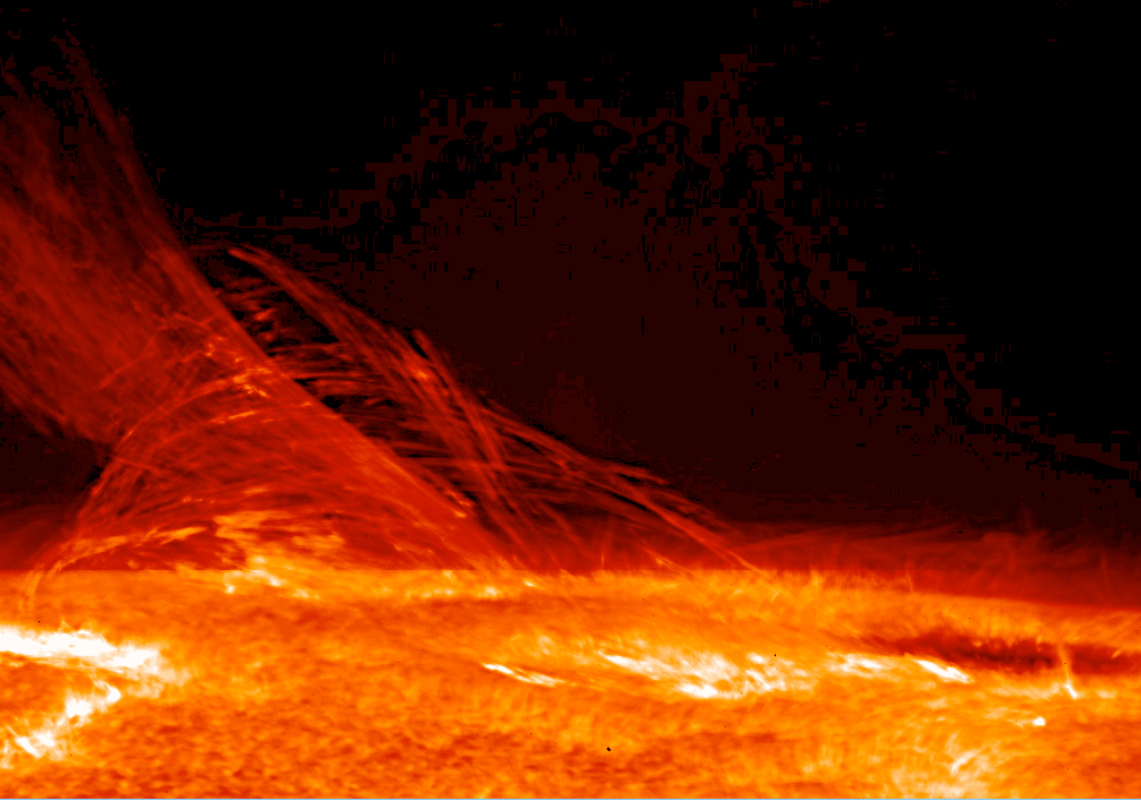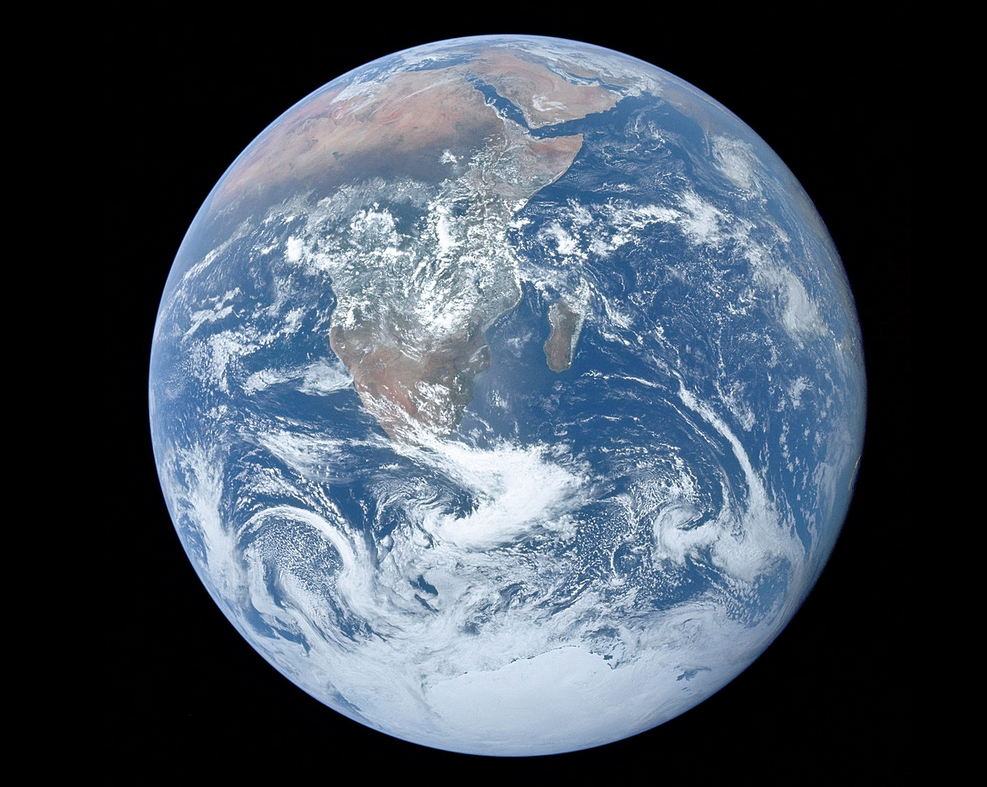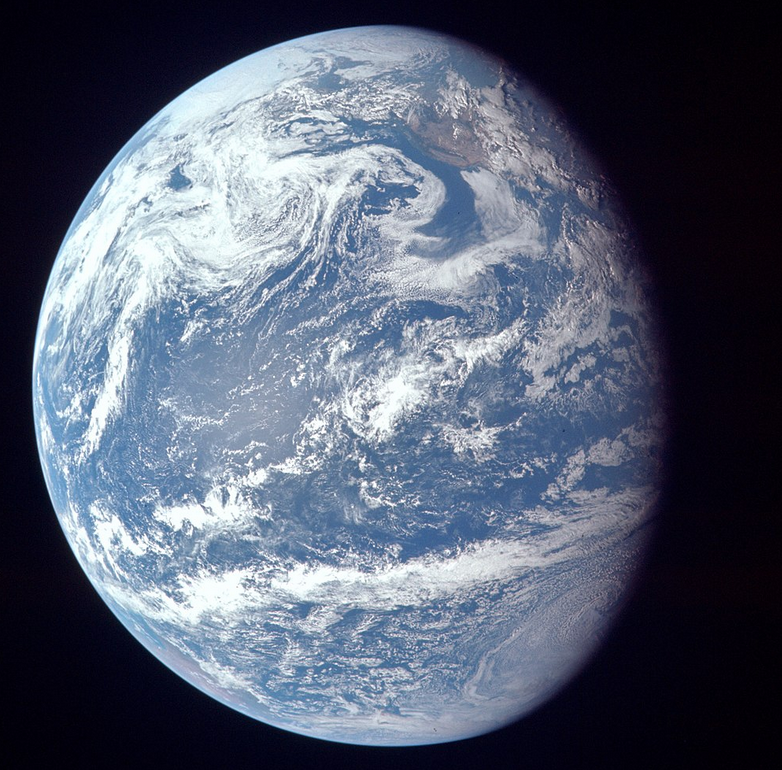What Is the Sun?
The orb that is visible in our daylight sky which we know as the sun is in fact a star. This star is classified as a yellow dwarf and is central to our solar system. Earth and the other planets of our solar system orbit this vast star. In fact it is our own planet’s rotation and orbit which creates the appearance of the sun moving across our sky. It itself is stationary as we revolve around it.

How Big Is the Sun?
The sun on a clear day is visible from the earth and in fact we should never stare directly at it. This is despite it being 93 million miles away so just how big is this giant orange orb? Scientists estimate that the sun has a radius of roughly 435,000 miles.
This may sound massive but there are many known stars which are much larger. In comparison to our planet however the sun is roughly 330,000 times the mass of earth and we could fit our planet into the sun 1.3 million times.
What Holds the Sun Together?
The sun because it is a star is actually a huge ball of gas which is held together by its own internal gravitational forces. It is made up of several regions which include in order from the center out:
- Core
- Radioactive zone
- Convection zone
- Photosphere
- Chromosphere
- Transition zone
- Corona
Once material exits the corona of the sun at supersonic speeds, it becomes what is known as a solar wind. This solar wind forms a huge magnetic bubble of sorts around the sun which is known as the heliosphere. It is this heliosphere that extends beyond the orbit of all the planets in our solar system. Essentially our planet as well as all others in the solar system are held within the sun’s atmosphere.
What the Sun Achieved
The high energy ultraviolet radiation from the sun is actually hazardous to all life however it was this energy that would play a pivotal role in creating life on earth. It was this energy that would provide the power to turn simple organic molecules into more complex ones. These more complex organic molecules would in turn become what is known as the building blocks for life.
Over billions of years these organic molecules became single cell organisms and then multicell organisms. As time progressed the gaseous makeup of the atmosphere would change and the protective gas layers helped filter the worst radiation from the sun.
Life would evolve and thrive including both flora and fauna species with the planet seeing multiple phases of species die off and be replaced. Throughout all of this the sun served as a power source feeding the plant life which then were consumed by the living creatures.
In terms of this planet’s history human existence represents a mere fraction. In fact modern day humans only date back between 40 – 50 thousand years on this planet having been pre-dated by other hominid species by several hundred thousand years.
What Is Earth?
The third of four terrestrial planets from the sun, the Earth is the only known astronomical object in our solar system that can and does support life. One of the key reasons it can support life is its high volume of surface water which covers about 70.8% of the planet, the rest being made up of continental landmasses.

Formation
Around 4.5 billion years ago when the sun was first forming so too were the planets of our solar system including the Earth itself. Swirling clouds of gas and dust were drawn together to form Earth in a process that may have taken 70 – 100 million years to complete.
During this development period it is a widely accepted theory that Earth’s moon formed around 4.5 billion years ago. This was shortly after Earth itself was drawn together. It is thought a huge Mars sized object struck the newly formed planet Earth ejecting debris into orbit around the planet.
The Debris from this proposed impact of Earth was held in orbit around the planet eventually forming into the moon we know today. Pulled together by gravity this same gravity exists today holding the moon together and affecting the Earth as well.
Using isotopes dating from samples collected from the moon’s surface we have been able to determine that it formed around 50 million years after the proposed origins of the solar system itself.
Formation of the Atmosphere
Our planet’s atmosphere is key to the existence of life on this planet and this along with our oceans was formed by volcanic activity and outgassing. Water vapor from these sources condensed into our planet’s oceans. It is possible that sufficient water may have been on Earth since its formation.
The Crust
At one time the Earth’s crust would have been a molten outer layer but over time this cooled into the solid crust we have today. At the center of Earth there is a molten core which even to this day plays a role in pushing new material to the surface and adding to the planet’s continental crust.
Billions of years ago our planet was far more volcanic than it is today but even in modern times volcanic activity and earthquakes remain as proof of continental crust development and movement.
The Future of Earth
The sun is important to the future of our planet and it is estimated that over the next 1.1 billion years its luminosity will increase by 10%. Over the next 3.5 billion years it may increase by up to 40% and this is a very considerable issue.

These increases in luminosity will serve to increase the surface temperature of Earth which will in turn accelerate the inorganic carbon cycle. The result of this will be a reduction in CO2 to levels that will be toxic to plant life.
In the next 100 – 900 million years these changes may lower CO2 so greatly that plant life will die off, decreasing oxygen levels making Earth unsuitable to support life any longer. Within 1.5 billion years it is estimated that our planet’s surface temperature may reach an average of 212 degrees Fahrenheit.
How Far Away Is the Sun From Earth?
The planet Earth orbits the sun in roughly 365 days but this is not in a perfectly circular orbit. As such we are slightly differing distances from this massive star throughout the year. On average we are 93 million miles (150 million kilometers) away from the sun, sometimes closer or further away depending on our orbit. The difference though is only by a few million kilometers so is not hugely significant.
Final Thoughts
Our distance from the sun is hugely significant in terms of its effects on our planet and the sustained future of our planet. In roughly 5 billion years the sun is projected to start to expand and turn red. Although it will not move it will technically get closer to the planet Earth and one day maybe even engulf it.
Right now our proximity to the sun is perfect for creating a thriving planet with plants and animals and no other planet in our solar system has the perfect conditions for life. Scientists are however still interested to find out if any of them may have been home to life in the distant past or may develop life at some point in the future.
